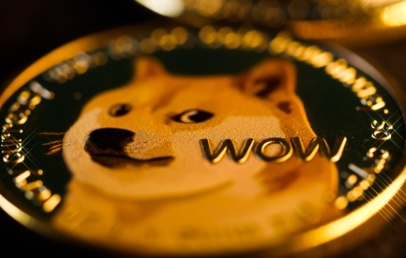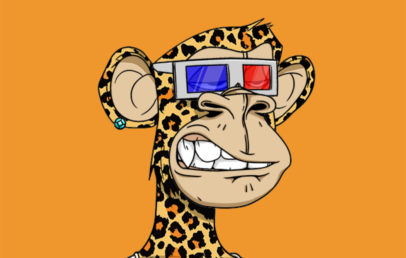The NFT market has imploded in the last month, with sales in nearly every category virtually non-existent. On May 3, NFTs reached a high of $102 million in a single day. One hundred million dollars of those sales came from the crypto-collectibles market.
However, according to data analysis, only $19.4 million in NFT sales were processed in the previous week. NFT collectibles (such as CryptoPunks and Hashmasks) have proven to be the most resilient and large of the seven markets ranked by NonFungible.com.
In the last week, approximately $9.2 million in crypto-collectibles were sold, accounting for nearly half of the total NFT market.
The Current Market Scenario
In total, $170 million in NFTs were traded in the seven days preceding the market’s peak, representing a near-90 percent drop.
The crypto-art NFT market is old news. NFTs linked to the so-called “metaverse,” such as digital real estate and other virtual artifacts, are outselling tokens linked to crypto-art.
Primary markets vs. secondary markets
The total number of active NFT wallets has also decreased from over 12,000 at the daily peak of each NFT category to just 3,900 yesterday (nearly 70 percent less). Over the last week, $3.3 million in metaverse NFTs were traded, and $3 million in crypto-art was sold. These figures include sales in both the primary and secondary markets.
Primary and secondary markets for crypto-collectibles are currently the largest ecosystem for NFT sales, according to daily data.
The secondary market for NFTs used as sports memorabilia comes in third place. Surprisingly, those NFTs have surpassed crypto-art in popularity.
In the last week, sports NFT traders exchanged tokens worth $3.16 million. Overall, the data suggest that the NFT bubble lasted only four months and burst around this time in May.
How Did It All Start?
In March 2021, an Iranian-born crypto entrepreneur paid $2.9 million for a Non-Fungible Token (NFT) of Twitter founder Jack Dorsey’s first tweet.
On April 6, he listed it on the NFT marketplace OpenSea, hoping to raise $48 million and promising to donate half of the proceeds to charity. As of 14 April, the highest bid was only $6,823.54.
Unsurprisingly, NFT detractors have seized on the news as further proof that the NFT bubble is bursting. Could that be correct? What exactly is going on in the NFT market
Trends in the NFT Market
NFTs were a little-known, very niche segment of the crypto industry until the beginning of 2021.
However, in February of last year, Mike “Beeple” Winklemann famously sold a collage of his digital art for $69.3 million at Christie’s auction house, igniting a historic period of growth in the NFT marketplace.
According to nonfungible.com’s Market Tracker, total global NFT sales averaged around 2,000 per day in early 2021, with a maximum value of a few hundred thousand dollars.
However, at the market’s peak in August 2021, over 200,000 NFT sales occurred each day, with the total value of sales briefly exceeding $400M.
Since then, the NFT market has cooled significantly.
According to nonfungible.com’s Market Tracker, the total number of daily NFT sales has remained mostly stable between 10,000 and 30,000, with the exception of the occasional spike. Meanwhile, the total value of daily sales has largely remained in the tens of millions of dollars, with the exception of the occasional spike above $100 million.
Total NFT sales in March this year were valued at $2.435B, the lowest since July 2021, according to CryptoSlam data, with 661,748 people purchasing NTFs, the lowest number since September 2021.
Views of a Digital Art Collector/Analyst
“I believe I am prepared for a cataclysmic market crash,” Colborn Bell, the founder, and curator of the Museum of Crypto Art, told Fortune in February.
The NFT marketplace, according to Bell, has too many sellers and not enough buyers. “The entry barrier for artists is much lower than it is for collectors… That formula, in my opinion, does not work.”
Meanwhile, Pablo Rodriguez-Fraile, a digital art collector, stated that “obviously, the enthusiasm and interest that we had at some points last year is not here anymore.” “I think we accomplished something that wasn’t sustainable last summer,” he said, referring to the high valuations and volume of sales.
Modesta Masoit, director of NFT research firm DappRadar, was more optimistic about the market. He told Reuters last week that the market is “consolidating” rather than declining overall, following its meteoric growth in 2021.
Are Social NFTs the Next Big Thing?
Ape Yacht Club Is Boring Demand for NFTs has not slowed significantly in 2022.
On the contrary, prices for the 10,000 different variants of the iconic cartoon ape have continued to average well over $250,000 since the beginning of the year.
This compares to an average of $87,000 last August when much of the rest of the NFT market peaked.
According to NFT market commentators, the continued growth in the market for Bored Ape Yacht Club NFTs reflects the growing demand for so-called “social tokens.”
Buyers of Bored Ape NFTs join a select group of high-profile owners that includes celebrities like Paris Hilton and Madonna.
Yuga Labs, the company behind the Bored Ape NFT collection, recently received $450 million in funding for the development of an NFT metaverse.
Owners of Bored Ape NFTs were given Yuga Labs’ new cryptocurrency ApeCoin last month, which has a market capitalization of more than $3.7 billion after only a few weeks. Raoul Pal, a well-known former Goldman Sachs executive, recently stated that expectations for growth in the market for Bored Ape NFTs prompted him to invest $400,000. “The BIG thing is social tokens,” he exclaimed.



